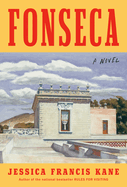
In 1980, noted British writer Penelope Fitzgerald wrote an essay entitled "Following the Plot," alluding to a trip she and her five-year-old son, Valpy, took to northern Mexico in 1952, at the invitation of two wealthy, elderly women in search of an heir to the fortune from their family's former silver mine. Taking Fitzgerald's barebones description of that strange journey as her starting point, Jessica Francis Kane (Rules for Visiting) has vividly imagined that experience in Fonseca, creating a story that's steeped in atmosphere as it explores themes of class and creativity, seasoning that mix with a touch of romance and even a bit of a ghost story.
When Penelope arrives in Fonseca, home to spinster Doña Elena and her sister-in-law Doña Anita, she finds she's only one of a collection of "Pretenders" to the expected inheritance. That group gathers nightly to jostle for the favor of the eccentric women. For Penelope, the pressure of a competition she finds distasteful is leavened by the presence of the famed painter Edward Hopper and his wife, Jo.
Kane paints a revealing, multidimensional psychological portrait of Penelope Fitzgerald, one that's enriched by information she gained from e-mail exchanges with the adult Valpy and his younger sister Tina, excerpts of which appear periodically in the text. It's an unusual, but effective, technique that doesn't detract from the novel's appeal as a work of fiction. Twenty-four years before she published her first novel, the Fitzgerald who appears in Fonseca is a deeply sympathetic character: a loving mother, anguished wife, and writer in whom the fires of literary ambition are smoldering, waiting to burst into flames. --Harvey Freedenberg, freelance reviewer

